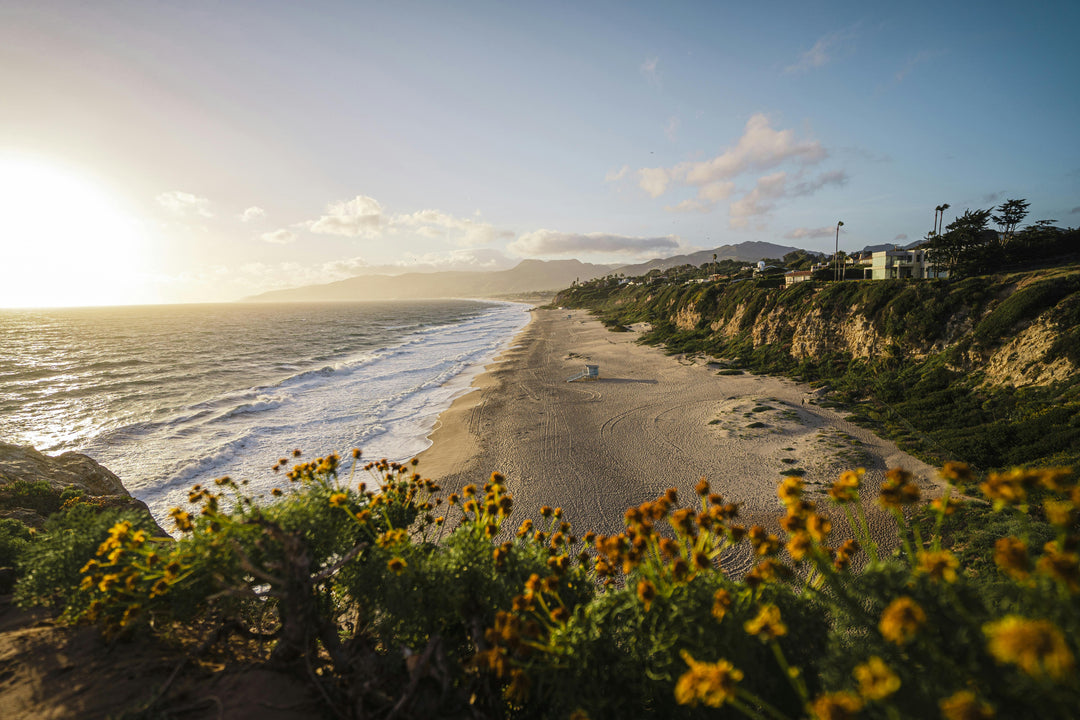DAVE SWEET - "FIRST IN FOAM"
Like many other shapers of the ‘60s, Dave Sweet grew up learning how to ride Southern California waves on long, heavy balsa and redwood surfboards. Born in Seattle, Washington in 1928, Dave moved with his family to Los Angeles when he was in the sixth grade. When Dave was 16, the Sweet family bought a summer cottage that was located just a few hundred yards from the beach at Topanga Canyon. There, he would ride his first wave, establish life-long friendships, and begin his love for surfing and the surf lifestyle. His first new surfboard was a custom redwood crafted by Bob Simmons, who would become Dave’s friend and mentor.

He soon found himself deeply immersed in the early Malibu surf scene and by 1949, Sweet was learning to shape surfboards on the beach - alongside the likes of Joe Quigg, Matt Kivlin and Dave Rochlen. Together, these legends developed what became known as the Malibu chip – the forerunner of the modern longboard.
When a block of Dow Chemical Styrofoam was first presented to Sweet, he was struck by all the possibilities for its use. The year was 1953, shortly after he had received his Bachelor’s degree from USC. He immediately began experimenting with Styrofoam prototypes, but a year later discovered polyurethane foam. For years, Dave poured all his resources into developing a material that would lighter, cheaper and easier to shape than balsa. He quite literally locked himself in the basement of the Hollywood boardinghouse he was living in at the time, mixing experimental recipes of polyurethane foam and building metal and fiberglass molds.

After years of dogged effort, Sweet was finally satisfied with his results, and the first “commercially-available” line of polyurethane surfboards was produced in 1956 - forever changing surfing and shaping history. Interestingly, Hobie Alter and Grubby Clark had gone through similar trial-and-error processes at about the same time, only about an hour or so to the south.
It is said that Sweet actually produced boards for sale a year or so before Hobie and Clark, giving Dave the distinction of “First in Foam.” He opened a small retail space in Santa Monica, establishing Dave Sweet Surfboards. Several months later, Dave’s brother Roger formed Robertson/Sweet Surfboards with Hollywood actor Cliff Robertson, who starred in the original Gidget movie. While the Robertson/Roger Sweet endeavor was short-lived, such late ‘50s Hollywood notables as Clark Gable, Eddie Albert and Jack Lemmon coveted surfboards built by Dave Sweet.

In addition to his huge role in developing the polyurethane foam surfboard blank, Dave Sweet also helped pioneer the surf team concept as a way to promote surfboard brands. Over the years, the Dave Sweet Surf Team included names like Tom Morey, J Riddle, Dave Rochlen, Les Williams, and “Buzz” Sutphin.
We all know what Tom Morey means to surfing, and J Riddle was a co-founder of Natural Progression Surfboards. He was also a stunt double for Jan-Michael Vincent in the movie Big Wednesday. Dave Rochlen went on to found Jams beachwear (remember jams??), and Les Williams helped develop the United States Surfing Association (USSA). The late “Buzz” Sutphin was an executive with The Chart House restaurant chain, which was co-founded by well-know surfer Joey Cabell. All were very accomplished surfers and part of Sweet’s marketing presence, which included an ad in Surfer Magazine’s very first issue.

In the early ’70s, a surge of backyard shapers saturated the market and changed the surfboard manufacturing industry, paring down larger operations like Dave Sweet Surfboards. He diversified his projects, but ultimately closed his shop in 1974. Dave Sweet died on May 18, 2015 at the age of 86. During his life, he devoted so much of his time and energy to developing the polyurethane foam surfboard blank. To this day, the Dave Sweet brand remains a symbol of surf heritage.
Until next time,
Ted









